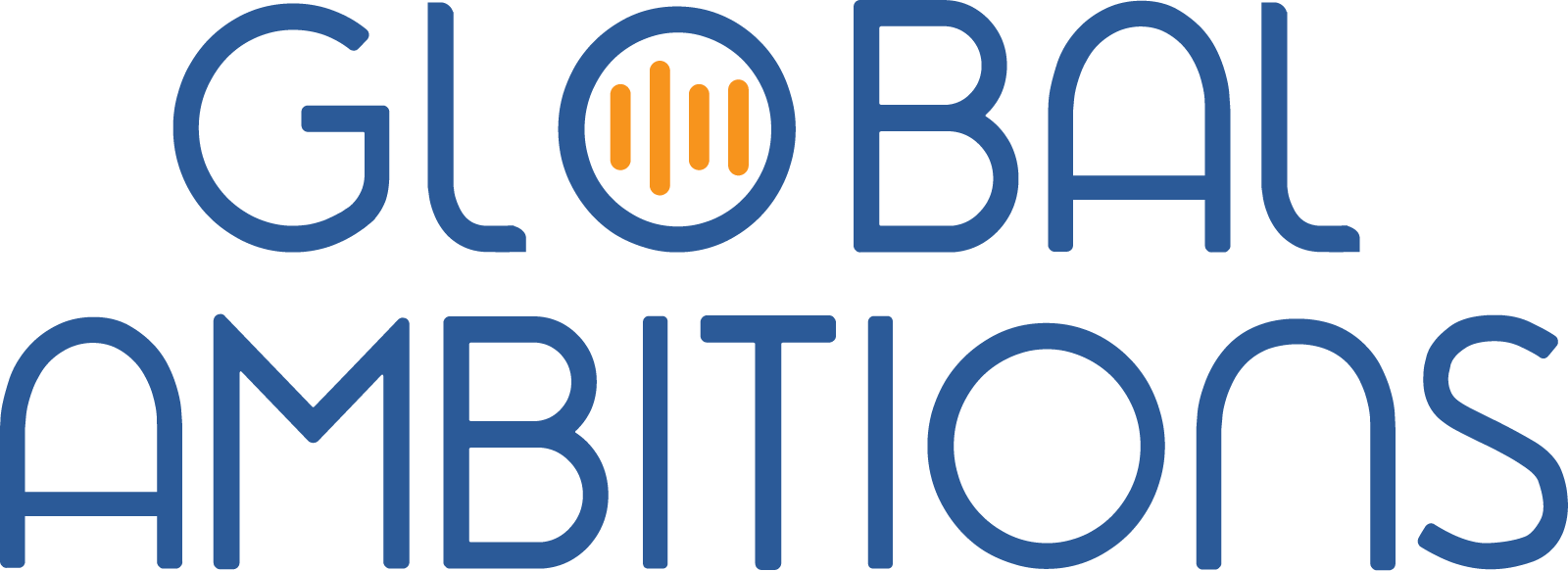Episode 1: With Paulina Makles, CEO @ Creative Tribe
This is the transcript for Episode 1 of Global Ambitions released on February 1, 2021.
Antoine 0:19
Okay. Hi, everyone. I’m Antoine Ray from Global Ambitions. And I will be your host today. Today my guest is Paulina Makles from Creative Tribe. Paulina, how are you?
Paulina 0:33
I’m good. I’m good. Thank you. How are you?
Antoine 0:35
Good. I’ll let you introduce yourself and let us know what it is that you do at Creative Tribe.
Paulina 0:41
Sure. So Creative Tribe is a company focusing on international content creation, SEO, localization, transcreation, everything that has marketing and creative aspects to it. That’s something we’re interested in.
Antoine 0:54
Okay, very good. And today specifically, we will be talking about international content creation. So the format of our podcast is 15 minutes. It’s sharp, short, and actionable. So let me dive straight into it. Paulina, if you don’t mind, the first question that I have for you that I’m interested in is to understand what are the trends and challenges that you’ve observed in terms of international content creation?
Paulina 1:21
Sure. So there is a rising trend in creating content directly in the target language, it’s much easier to identify trends and content that is relevant for the target market that way, instead of localizing it from English. The main challenge, I would say is primarily cost. It’s much more expensive to create content directly in the target language. And there’s also a matter of transferring the power to the provider and the copywriter. When you don’t have an internal resource that speaks the language, you somehow rely on your provider and your copywriter that is working for you to give you ideas and to make sure that the content is relevant.
There’s also what I’ve seen is a lack of ideas. Some of the companies that create content focus on using that content to market their service or product instead of providing solutions or answers to the questions that people look for online. So, each of the pieces on their blog looks like a pitch instead of something that offers actionable advice and actionable items that they can use in their company or whatever they’re doing. So those are two things that I think are relevant here.
Antoine 2:39
So you’re saying that you’re seeing people more and more, instead of adopting from a source English, they are creating content directly in the target market? Correct?
Paulina 2:55
Yes.
Antoine 2:57
So we’ll go into the perceived benefits and challenges associated with that, working with various companies that you might have observed. What are the different mistakes, the pitfalls to avoid when you decide to go and create international content? Can you tell us a bit more about that?
Paulina 3:18
Sure. So first and foremost, translating directly, especially translating keywords, that’s something that is unforgivable in content creation. So when you decide to translate, that’s already a mistake. Because you don’t really know if that content is relevant for the market that you’re translating into, localizing into. So that’s a big no, no. It’s definitely better to go straight to content creation, especially if you’re dealing with markets that are culturally different. And culturally further from your source market.
Again, using content to boast about your product, that’s something that I have seen many, many times. It’s a big no, no. Because what it does, instead of converting that person that’s reading the content into a user or into a buyer, it feels like they’re taking part in a constant pitch. And nobody wants that. When you look for information on the internet, you want to read useful content that brings answers to your questions and doesn’t try to sell you a service or product.
There’s also an issue of lack of ideas when it comes to content. A big thing lately has been productivity at work because of COVID and working from home, etc. And I have seen loads of pieces of content that speak about productivity, and speak about productivity when you’re working from home. But how is that relevant to their service or product or to the service or product that the company is selling? Is that clear for me? You have to think about how the stuff that you’re working on that you’re writing about is relevant for your potential for your readers.
Nobody will look for content about work productivity on a website that relates to something entirely different. I don’t know… a website about, Microsoft, or software. But on the other hand, if you’re selling software as a service that has something to do with productivity, like for instance, is it a chat or, or a program that focuses on making you more productive at work? That’s relevant. So I think those are the biggest don’ts.
So to sum up, translating directly, especially when it comes to keywords. Using content to boast about your product or service instead of answering relevant questions. And creating content that is not relevant to your service, and doesn’t give you an opportunity to convert readers into buyers or users.
Antoine 5:48
Okay, so these are the main big no-no to avoid when you’re trying to create international content as opposed to translating it from a source language. Okay. So if we go to the other side of the coin here, these are the mistakes to avoid. What are the best practices that you would recommend when someone embarks on a project of creating content in a different country?
Paulina 6:18
Sure, so everything starts with keywords, it always starts with keywords. It’s a really powerful tool that gives you a great overview of what you should be talking about to be searchable and to be relevant to your users. So you start with that. You start with researching your target keywords in any of the languages that you want to create content in. Apart from being SEO relevant, because people search for keywords, it is a really powerful tool to give you ideas on what to write about. So you start with that, you research keywords, you check for keywords that are related to your competitors, you make sure that you identify keywords that you are able to target without having to have to fight for users with your competitors.
When you have that list, you make sure that the keyword is used in the content. But firstly, it’s used in the URL. So in the small link with your content, you have to use that keyword there to be able to leverage that keyword best. When it comes to the content itself. The copy has to mention the keyword in the first 200 words. It has to have that keyword in something that’s called h1 tag, which is just a headline. You have to use that keyword that you’ve chosen in your headline. And then when you have a second and third headline, you can populate those keywords or you can use secondary and other keywords that you’ve chosen for the content that is somehow related to the main one that you’ve chosen.
For each URL, you should have three to five keywords identified that you should be using throughout the content. And there should always be a primary keyword, and secondary and tertiary keywords that you would be using. Then, when it comes to the structure of the content, it has to be broken up into smaller blocks. So it’s easier to scan and easier to read. Anything you can add to the content such as videos, images, screenshots, slideshows, it’s super useful because it makes the content more interesting.
Something that people don’t remember to do is internal and external linking. So when you have a website that you, for instance, that piece of content we’re talking about is a blog. Make sure that you use internal linking to direct users to other posts on your blog, or through adding links to relevant content. The more links you have, overall, in many pieces of content, the easier it is for search engines to search for them. So that’s the technical aspect.
But also, it’s more engaging. If a user sees that something that he’s also interested in is linked in the text, he’ll go to another blog or another piece of content and read that and stay on your website for longer. So that helps you. That helps to keep them engaged while they’re reading that content.
But there’s also something called external linking. And that is an entirely technical aspect. You should have one or two External links that you use. For instance, when you’re quoting some kind of research, make sure to use the link that directs users to that research that you’re quoting. It also increases the visibility of your content. And the more authoritative the sites are, the better rank there are, the better. If you link to a website that no one visits, that doesn’t really matter. But if you link to a website that has very relevant content and is visited by many users, that’s a very good thing to do. It usually works with linking to tools that you’re speaking about, linking to research that you quote, etc.
But to close off, when you have your content ready, there is one very important element that many people emit. That is a meta description and meta title. So the small chunks of content that appear when you search for something in Google or any other search engine. That small chunk of content that appears in the search result, that’s a meta description. You have to write that, otherwise, the search engine will use the first few sentences of your content, but that won’t necessarily answer the question that the user has, what the content is about. So you should use it wisely to give a short overview of what your posts or what your content is about to make them click and make them go and read your content.
Make sure you have the right few keywords in the description. So you have to use that keyword in that meta description as well. And then your meta title and meta description. There is also one important thing if you decide to use images or slideshows, or videos in the content, make sure to add file names and something called alt text to the images. And it’s even better if they can contain the keyword because not only users search for content, but they also search for images. So the more packed with keywords is your content in relevant places, the better for your content, because it’s searched from different angles, so to speak. And that’s basically the checklist that you have to go through to make sure that your content is on spot.
Antoine 11:36
Now very insightful. Thanks, Paulina. Why do you think a lot of companies are moving away from content adaptation to actually creating international content directly?
Paulina 11:52
As I mentioned, at the very beginning, I think companies are starting to realize that each market is different in terms of what users are searching for, what is relevant in the US market will not be relevant in, my favorite is, the Japanese market that has a completely different way of working. A completely different way of thinking. They look for different things. They are on a different level when it comes to technology. They use technology in a different way. And when you translate something that is relevant for the US users, it will be absolutely useless for anyone in Japan. So first, you have to find out what these users are searching for, again, keywords that give you an eye an idea of that. And create content that is clickable for them. Something that the Japanese want to click, want to read.
Antoine 12:42
Very good. Well listen, Paulina, thank you very much for those insights, I’m sure our listeners will find nuggets that they can use in their own international content creation, or even the decision to create international content.
Paulina, again, thank you very much for participating in our podcast, and once again, thank you, everyone. Bye.

Paulina Makles
CEO @ Creative Tribe, Localization & Marketing Consultant




